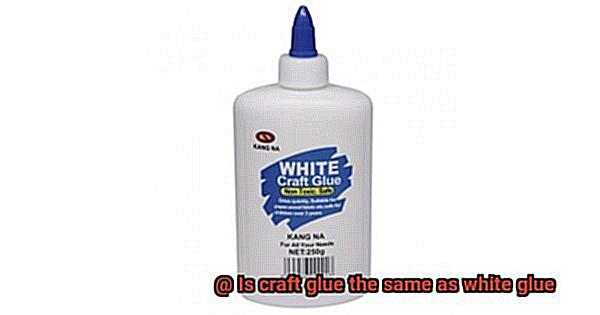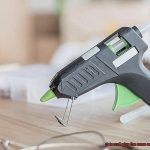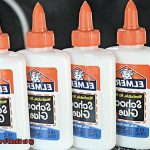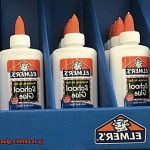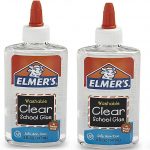Craft glue and white glue: are they really the same thing?
It’s a question that often pops up in the crafting world. Many people assume they’re interchangeable, but the truth is, there are subtle differences between the two.
In this blog post, we’ll delve into these differences to help you figure out which glue suits your crafting needs best. We’ll explore their compositions, drying times, and applications, giving you all the knowledge you need to make an informed decision for your next creative endeavor.
So, let’s jump right in and unravel the craft glue versus white glue mystery.
Key Differences Between Craft Glue and White Glue
Contents
- 1 Key Differences Between Craft Glue and White Glue
- 2 Types of Craft Glues
- 2.1 White Glue – The Versatile Hero:
- 2.2 White glue is like a chameleon, blending seamlessly into any project. It is easy to apply, providing a strong bond when allowed to dry completely. Whether you’re creating scrapbook pages or building a model out of wood, white glue is the versatile hero that will hold everything together.
- 2.3 Clear Glue – The Invisible Magician:
- 2.4 Next up is clear glue, the master of invisibility. Similar to white glue, it is water-based and safe for all ages. However, it has a superpower – it dries transparent. This makes it perfect for glass crafts or attaching embellishments to clear surfaces like plastic or metal.
- 2.5 Craft Glue Sticks – The Quick Fixers:
- 2.6 Craft glue sticks are the superheroes of speed, allowing you to complete your projects in a flash. With just a squeeze of the trigger, the hot glue stick melts into a sticky liquid that quickly solidifies into a strong bond. Whether you’re embellishing a costume or assembling a DIY home decor piece, craft glue sticks are your trusty sidekicks that will never let you down.
- 2.7 Epoxy Resin – The Mighty Bond Builder:
- 3 Uses of Craft Glue
- 4 Types of White Glues
- 5 Uses of White Glue
- 6 Advantages of Using Craft Glue Over White Glue
- 7 Advantages of Using White Glue Over Craft Glue
- 8 Tips for Choosing the Right Adhesive for Your Project
- 8.1 Consider the Materials:
- 8.2 For example, if you’re working with porous materials like paper or fabric, a liquid adhesive such as craft glue or white glue would be suitable. On the other hand, if you’re working with non-porous materials like metal or glass, an epoxy adhesive or super glue would provide a stronger bond.
- 8.3 Strength and Durability:
- 8.4 Drying Time:
- 8.5 Application Method:
- 9 Conclusion
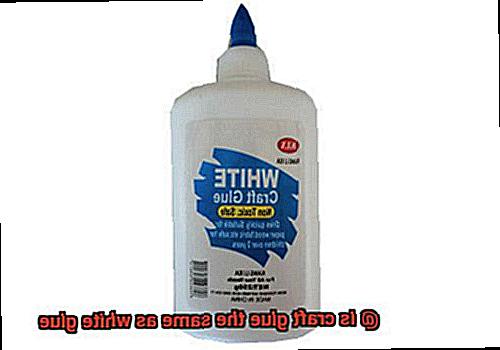
Crafting and DIY projects have gained immense popularity in recent years, requiring the use of various adhesives to bring creative ideas to life. Two commonly used adhesives, craft glue and white glue, may seem similar but have distinct differences that make them suitable for different applications. In this blog post, we will explore the key differences between craft glue and white glue to help you make an informed decision when selecting the right adhesive for your next project.
Craft glue is specifically formulated for arts and crafts projects and is often made from a combination of synthetic resins and polymers. This composition provides a strong bond and flexibility, making it ideal for bonding materials like fabric, foam, and wood. On the other hand, white glue is typically made from a water-based emulsion of polyvinyl acetate (PVA), which dries clear and forms a strong bond. It is commonly used in woodworking, paper crafts, and general household repairs.
Craft glues are designed to dry relatively quickly, allowing crafters to continue working without waiting for extended periods. This quick drying time is perfect for projects that require immediate bonding or attaching lightweight materials. In contrast, white glue has a longer drying time, ranging from a few minutes to several hours depending on the brand and application thickness. The slower drying time of white glue allows for repositioning and adjustment of glued pieces before they permanently bond together.
Craft glues tend to have a thicker consistency compared to white glues. The higher viscosity of craft glue allows for versatile application on various surfaces, including porous materials like fabric and foam. It also prevents running or dripping when applied vertically or on vertical surfaces. On the other hand, white glue has a thinner consistency, making it easier to spread evenly on surfaces. This makes it ideal for applications such as paper crafts and gluing lightweight materials like paper, cardboard, and foam board.
Craft glue is known for its stronger bond and durability compared to white glue. Craft glues are formulated to withstand the stress and strain that can occur in crafting projects, such as bending, twisting, or pulling. They adhere well to a wide range of materials, including fabric, plastic, metal, and glass. In comparison, white glue offers a strong bond but may not be as durable or flexible as craft glue. It is commonly used for non-load-bearing applications where strength and flexibility are not major concerns.
Types of Craft Glues
Crafting is a magical journey where imagination takes shape through the power of glue. But did you know that there are different types of craft glues, each with its own special powers? In this blog post, we will embark on an adventure to discover the various types of craft glues and their marvelous applications. So, grab your crafting tools and let’s dive in.
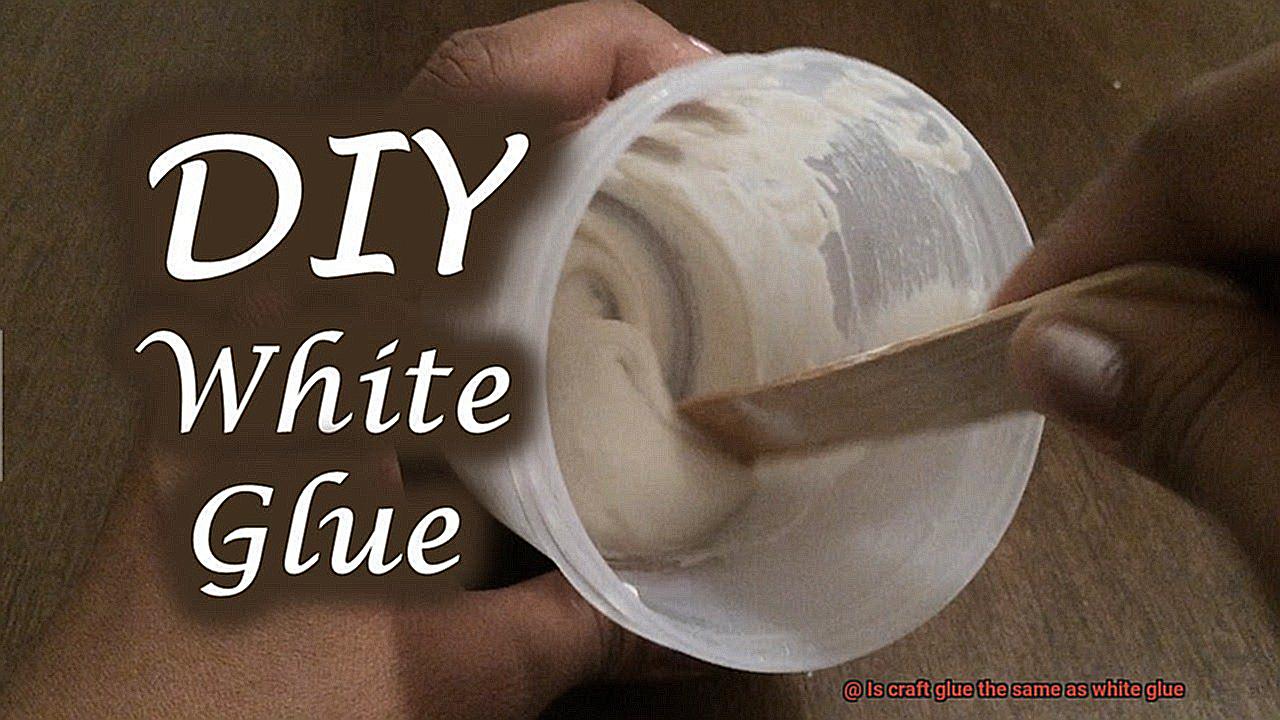
White Glue – The Versatile Hero:
Our first hero is white glue, also known as school glue or PVA glue. This adhesive wonder is perfect for projects involving paper, cardboard, fabric, and wood. Its water-based formula makes it safe for children to use, and it dries clear, making it ideal for crafts where you don’t want the glue to show.
White glue is like a chameleon, blending seamlessly into any project. It is easy to apply, providing a strong bond when allowed to dry completely. Whether you’re creating scrapbook pages or building a model out of wood, white glue is the versatile hero that will hold everything together.
Clear Glue – The Invisible Magician:
Next up is clear glue, the master of invisibility. Similar to white glue, it is water-based and safe for all ages. However, it has a superpower – it dries transparent. This makes it perfect for glass crafts or attaching embellishments to clear surfaces like plastic or metal.

Clear glue is like a magician’s trick, disappearing into thin air while securely holding your project together. Its invisible nature allows you to create stunning glass art or add delicate details to your crafts without any visible traces of adhesive. With clear glue, your creativity can shine through without any distractions.
Craft Glue Sticks – The Quick Fixers:
Craft glue sticks, also known as hot glue sticks, are like magic wands in the crafting world. When melted using a hot glue gun, they create a quick and strong bond on materials like fabric, wood, plastic, and metal. They are versatile and easy to use, making them a popular choice among crafters.
Craft glue sticks are the superheroes of speed, allowing you to complete your projects in a flash. With just a squeeze of the trigger, the hot glue stick melts into a sticky liquid that quickly solidifies into a strong bond. Whether you’re embellishing a costume or assembling a DIY home decor piece, craft glue sticks are your trusty sidekicks that will never let you down.
Epoxy Resin – The Mighty Bond Builder:
Epoxy resin is a two-part adhesive that combines a resin and a hardener to create an unbreakable bond. This superhero is perfect for heavy-duty tasks like jewelry making or repairing household items. It can bond materials like glass, metal, ceramic, and even some plastics.
Uses of Craft Glue
Craft glue, also known as crafting glue, is a versatile adhesive that serves as the superhero of the crafting world. It swoops in, saves the day, and holds everything together. Craft glue offers unique features that cater to the specific needs of crafters, making it suitable for various art and craft projects.
One of the primary uses of craft glue is in paper crafts. Crafters rely on craft glue to securely attach paper elements such as cutouts, embellishments, and decorative elements to their projects. Its strong adhesion ensures that the paper pieces stay in place, even when subjected to handling or display. Craft glue is particularly useful in scrapbooking, card making, and other paper-based crafts where precision and longevity are essential.
Craft glue is not limited to paper crafts; it is also widely used in fabric crafts. Unlike white glue, craft glue has a flexible and durable bond that can withstand washing and stretching. This makes it ideal for adhering fabrics together or attaching fabric embellishments to garments or accessories. Sewing enthusiasts, quilters, and textile artists often turn to craft glue as a reliable alternative to stitching or iron-on adhesives.
Jewelry making is another popular application of craft glue. Crafters frequently use this adhesive to attach beads, gemstones, and other jewelry components to various bases such as metal, plastic, or fabric. The strong bond provided by craft glue ensures that the jewelry pieces remain intact even with regular wear. Crafters can experiment with different materials and create unique pieces without the need for specialized jewelry adhesives.
In mixed media art projects, craft glue plays a vital role. Mixed media artists combine various materials such as paper, fabric, metal, wood, and found objects to create visually dynamic artworks. The versatility of craft glue allows artists to seamlessly bond different materials together, ensuring the durability and stability of their creations. Whether it’s attaching metal embellishments to a canvas or affixing fabric to a wooden surface, craft glue provides the necessary adhesion for mixed media artists to bring their visions to life.
Craft glue is not only for adults; it is also frequently employed in kids’ crafts and educational projects. Its non-toxic nature and ease of use make it a popular choice for young crafters. Craft glue allows children to explore their creativity by sticking materials together, creating collages, or constructing simple structures. From school projects to rainy day activities, craft glue is an essential tool that facilitates hands-on learning and artistic expression for children.
Types of White Glues
Craft glue and white glue are often used interchangeably, but there are actually some important differences between these two types of adhesive. Let’s dive deeper into their similarities and differences to help you make an informed decision for your next crafting project.
- Consistency: Craft glue is typically thicker and more viscous than white glue. This thicker consistency allows for better control when applying the glue to different surfaces, making it ideal for intricate craft projects. On the other hand, white glue has a thinner consistency, which makes it great for soaking into porous materials like wood or fabric, providing a strong bond.
- Intended Use: Craft glue is specifically designed for crafting applications. It is perfect for bonding materials like paper, fabric, foam, and lightweight plastics. Craft glue often has additional additives to enhance its bonding strength and flexibility, making it a reliable choice for various craft projects. In contrast, white glue is a versatile adhesive that can be used for a wide range of purposes, including woodworking and general household repairs. It is suitable for bonding different materials such as paper, wood, ceramics, and more.
- Drying Time: Craft glues often have a longer drying time compared to white glues. This longer drying time allows crafters to reposition their work before the adhesive sets completely, which can be helpful when working on intricate or detailed projects. Craft glue’s longer drying time also gives crafters more time to adjust and perfect their creations. On the other hand, white glues typically dry faster, allowing you to move on to the next step of your project more quickly.
- Finish: Some craft glues have a clear or colored finish once dry, adding an extra touch of style to your project. This can be particularly useful when working on crafts that require a seamless finish or when appearance matters. Craft glues with a colored or metallic finish can add a decorative element to your project. White glues, on the other hand, dry transparently, making them ideal for applications where the appearance of the adhesive is less important.
- Additives: Craft glues may contain additives that make them more suitable for specific crafting needs. For example, some craft glues have increased flexibility or increased water resistance, allowing them to withstand wear and tear better than regular white glue. Craft glues with increased flexibility are ideal for projects that require bending or movement, ensuring a long-lasting bond. Additionally, craft glues with increased water resistance are suitable for outdoor crafts or projects that may come into contact with moisture.
Uses of White Glue
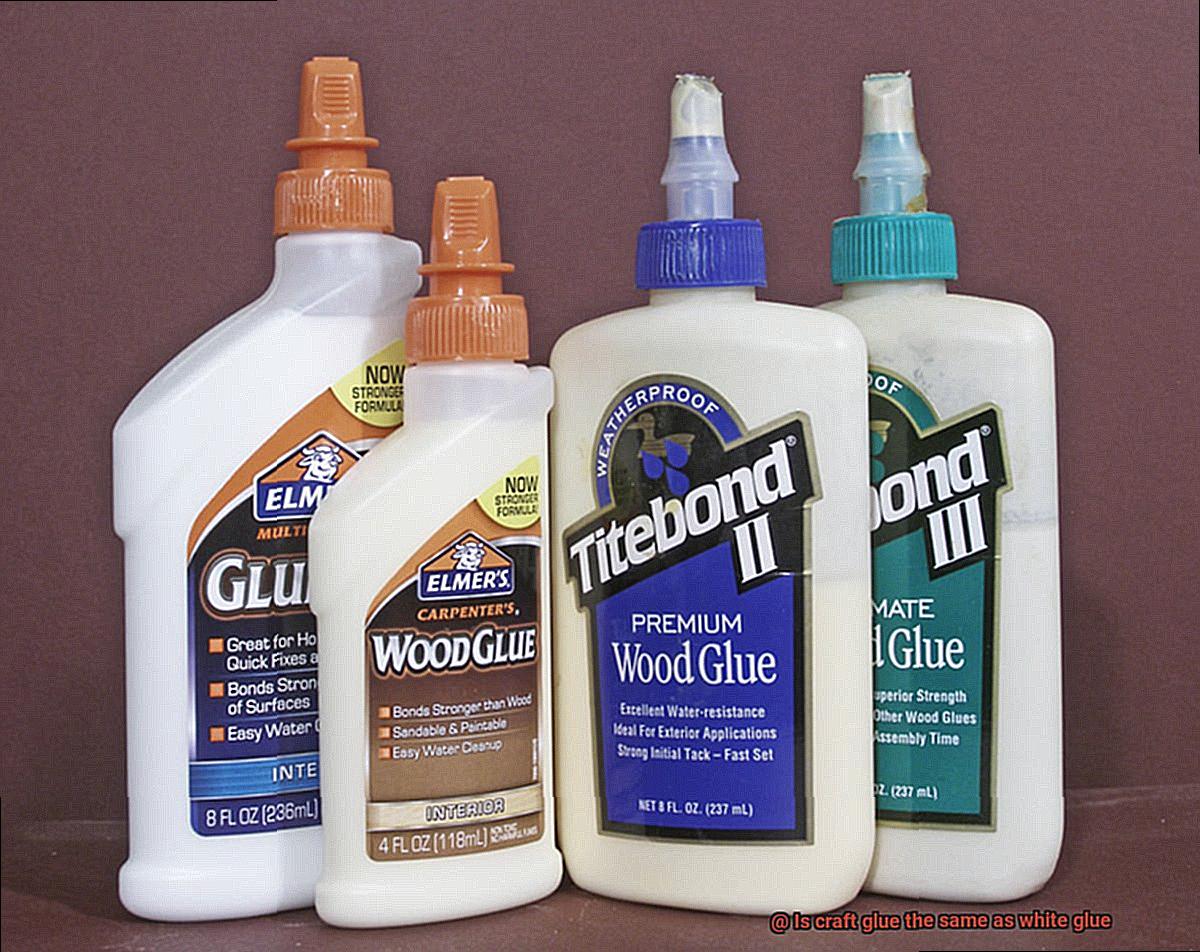
Look no further than white glue. Also known as school glue or PVA glue (polyvinyl acetate), white glue is a reliable adhesive that creates a strong and durable bond. Let’s explore the various uses of white glue and discover how it can benefit you in different areas.
In the world of arts and crafts, white glue is a staple. It’s perfect for paper crafts, collages, and model making. The best part? White glue dries clear, leaving no unsightly residue to ruin your masterpiece. Whether you’re designing handmade cards, creating a scrapbook, or constructing a model airplane, white glue will ensure your creations stay intact.
If you’re into woodworking, white glue is your new best friend. It bonds wood pieces together, creating strong and sturdy joints. Applied correctly, white glue penetrates the wood fibers, forming a bond often stronger than the wood itself. From furniture repairs to cabinet installations to building wooden structures, white glue is an excellent choice for various woodworking projects.
White glue also has a place in bookbinding and paper restoration. Its adhesive properties make it ideal for repairing torn pages or reattaching loose covers. With precise application and quick drying time, white glue allows you to continue working on your project without significant delays.
But wait, there’s more. White glue can be used in other areas too. Need to hem fabric? Attach patches? Applique something onto another fabric? White glue has got you covered as a fabric adhesive. It can also act as a sealant for porous materials like clay or foam, providing a protective layer and enhancing their durability. And did you know that it has even been used in the construction industry as an adhesive for ceramic tiles? The possibilities are endless.
However, it’s important to note that white glue may not be suitable for all applications. It’s not recommended for surfaces exposed to moisture or high heat, as it may lose its adhesive properties. In those situations, specialized adhesives like epoxy or silicone may be more appropriate.
Advantages of Using Craft Glue Over White Glue
Craft glue is often the preferred choice over white glue for various reasons. Here are the advantages of using craft glue:
- Stronger Bond: Craft glue is specifically formulated to provide a stronger and more durable bond than white glue. It adheres well to a wide range of materials, including fabric, paper, wood, and plastic. This makes it ideal for projects that require a long-lasting bond.
- Quick Drying Time: Craft glue typically dries faster than white glue. This is beneficial when working on time-sensitive projects or when you need to complete multiple crafts in a short period. With craft glue, you can keep the momentum going and avoid long waiting times for the adhesive to set.
- Versatility: Craft glue is highly versatile and suitable for various crafting techniques, such as decoupage, collage, and scrapbooking. It can be used on porous and non-porous surfaces, providing endless possibilities for creative projects. White glue may not work as well on certain materials or offer the same level of versatility.
- Transparency: Craft glue often comes in clear or transparent forms, making it perfect for projects where the adhesive needs to be invisible. This is especially useful when working with delicate materials or when you want the focus to be on the design rather than the adhesive itself.
- Resistance to Moisture and Heat: Craft glue is generally more resistant to moisture and heat compared to white glue. It can withstand exposure to water or high temperatures without losing its adhesive properties. This is advantageous for crafts that may come into contact with water or require heat setting.
- Precise Application: Craft glue typically comes with applicators that allow for precise and controlled application. These applicators may include fine tips or brushes, enabling you to apply the glue in small areas or create intricate designs with ease. White glue often comes in larger bottles with wider openings, making it harder to achieve the same level of precision.
- Longer Shelf Life: Craft glue tends to have a longer shelf life than white glue. It has better storage stability, allowing you to buy it in bulk or keep it for future projects without worrying about expiration or deterioration.
Advantages of Using White Glue Over Craft Glue
Crafting is an art form that requires the perfect adhesive to bring ideas to life. While craft glue may be the usual choice, it’s time to consider the myriad advantages of white glue, also known as PVA glue.
From its versatility and quick drying time to its ease of use and cost-effectiveness, white glue has become the ultimate crafting companion. In this blog post, we will explore the various advantages of using white glue over craft glue, empowering you to take your crafting projects to new heights.
Versatility:
White glue reigns supreme as the master of adhesives, capable of bonding a wide range of materials together. Unlike craft glue, which often has limitations based on specific materials or purposes, white glue can be used on paper, fabric, wood, and even some plastics. Its versatility makes it the go-to choice for countless crafting projects, from simple school assignments to intricate DIY home decor.
Quick Drying Time:
Crafting is a race against time, and white glue gives you the advantage with its swift drying capabilities. Unlike some craft glues that can take hours or even days to fully dry, white glue sets in a matter of minutes or up to an hour, depending on the application’s thickness. This means less waiting around and more productive crafting sessions, allowing you to finish projects efficiently and move on to your next creative endeavor.
Ease of Use:
Crafting should be an enjoyable experience for everyone involved, regardless of their skill level. White glue makes this possible with its smooth and easily spreadable consistency. Whether you’re a seasoned crafter or just starting out, working with white glue is a breeze. Furthermore, if you make a mistake or need to readjust your work, fear not. White glue is water-soluble, enabling you to effortlessly remove or reposition glued pieces by simply dampening them with water.
Non-Toxic and Safe:
Safety is paramount, especially when children are involved in crafting activities. Luckily, white glue is generally non-toxic and safe to use, making it an ideal choice for schools and educational settings. While adult supervision is still recommended, you can have peace of mind knowing that white glue poses minimal health risks compared to other adhesives.
Cost-Effective:
Crafting can sometimes strain your budget, but white glue offers a cost-effective solution without compromising quality. Available in various sizes and packaging options, white glue is generally more affordable than specialized craft glues. This means you can achieve professional-looking results without depleting your funds, allowing your creativity to flourish without financial burdens.
Tips for Choosing the Right Adhesive for Your Project
When it comes to selecting an adhesive for your project, it’s crucial to choose the right one to ensure a strong bond and successful outcome. With the wide range of adhesives available, it can be overwhelming to know which one is best suited for your needs. In this guide, we will explore the key factors to consider when selecting the perfect adhesive for your project.
Consider the Materials:
The first and most important factor to consider is the materials you’ll be working with. Different adhesives are designed to bond specific materials, such as paper, fabric, wood, or plastic. It’s essential to choose an adhesive that is compatible with the materials you’re using to ensure a strong and durable bond.
For example, if you’re working with porous materials like paper or fabric, a liquid adhesive such as craft glue or white glue would be suitable. On the other hand, if you’re working with non-porous materials like metal or glass, an epoxy adhesive or super glue would provide a stronger bond.
Strength and Durability:
The strength and durability requirements of your project should also be taken into consideration. If you’re working on a heavy-duty project that requires a secure bond, such as woodworking or metalworking, opt for adhesives that are specifically designed for these purposes.
These adhesives are formulated to provide maximum strength and durability, ensuring that your project will withstand wear and tear over time.
For projects that require flexibility or repositioning, such as crafting or temporary bonding, choose adhesives that offer a more flexible bond. These adhesives allow for adjustments and repositioning before they fully set.
Drying Time:
The drying time of the adhesive is another important factor to consider. Some adhesives dry quickly, allowing you to move on to the next step of your project without delay. These fast-drying adhesives are ideal for projects with tight deadlines or when you need to work on multiple components simultaneously.
However, if your project requires more time for adjustments or alignment, choose an adhesive with a longer drying time. This will give you ample time to make any necessary adjustments before the adhesive sets.
Application Method:
Consider the application method that is most convenient for your project. Adhesives come in various forms, such as tubes, bottles with applicator tips, pens, or cans. Some adhesives are designed for precise application, while others are better suited for larger areas.
For intricate or delicate projects, choose adhesives with fine-tipped applicators that allow for precise control. If you’re working on larger surfaces or need to cover a wide area quickly, opt for adhesives that come in larger containers with brush or spray applicators.
HpdRMwlBnuw” >
Conclusion
Craft glue and white glue may seem similar at first glance, but they are not exactly the same.
While both types of glue are commonly used for arts and crafts projects, there are some key differences between them. Craft glue, also known as crafting glue or art glue, is specifically formulated for use in various craft applications.
It is often thicker and more viscous than white glue, allowing for better control and precision when adhering materials together. Craft glues also tend to dry faster and provide a stronger bond than white glues.
On the other hand, white glue, also called school glue or PVA glue (polyvinyl acetate), is a general-purpose adhesive that is widely used in schools and households. It has a thinner consistency compared to craft glue and is typically used for paper-based projects such as scrapbooking or card making.
White glues usually take longer to dry but offer a reliable hold once fully cured.

